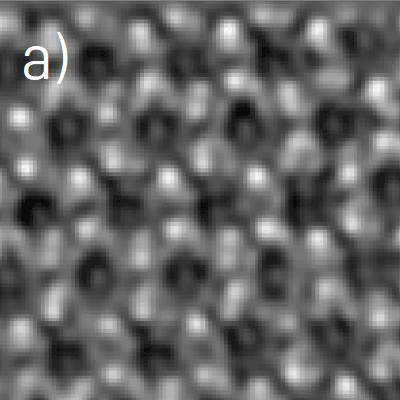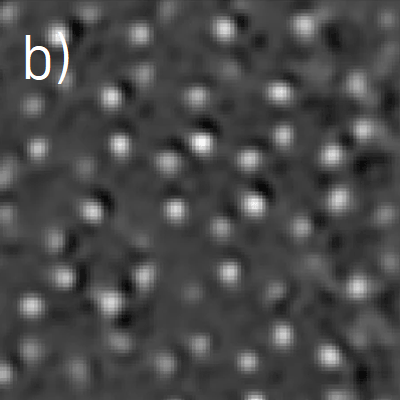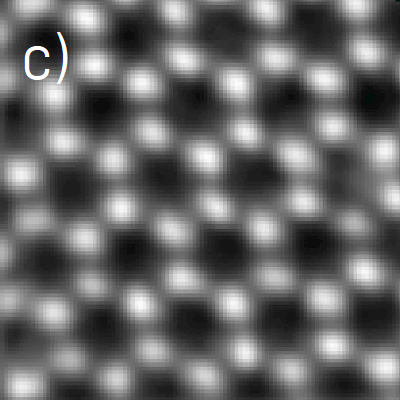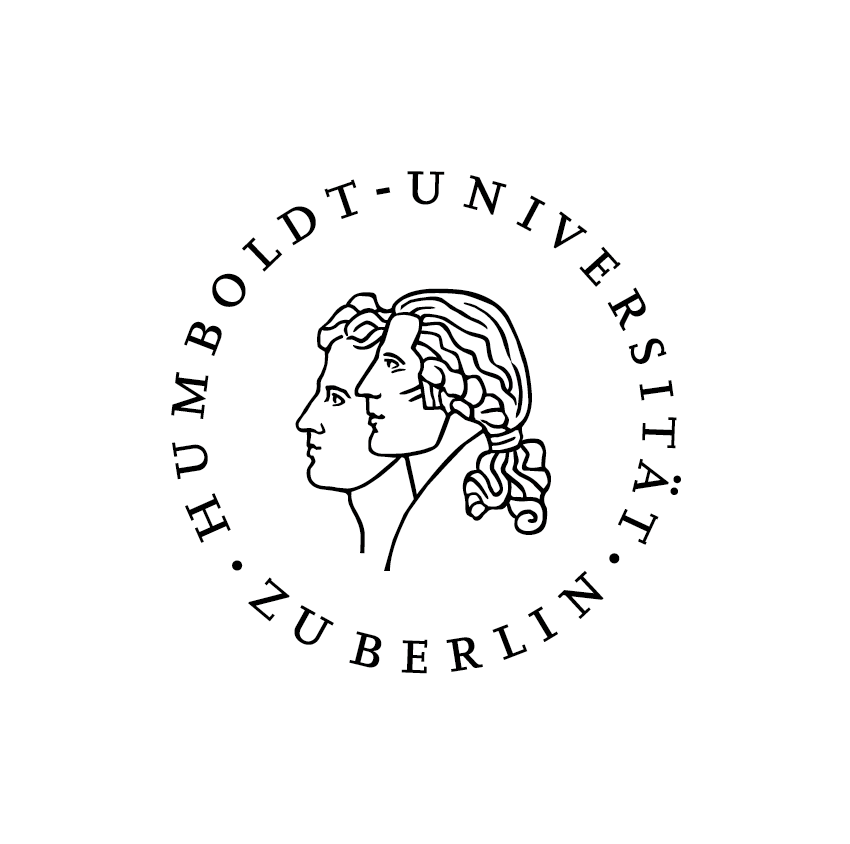
Our microscopes rank among the world’s finest and highest-resolution instruments. With the NION HERMES microscopes, we not only have the capability to visualize individual atoms but also to unveil their intrinsic properties. We can identify the type of atom, its bonding with neighbouring atoms, and characterize these neighbouring atoms, etc.
To perform these measurements, it is crucial to pinpoint the atomic positions efficiently, without excessive time or energy expenditure. Extended measurements risk atomic displacement, while excessive energy input can jeopardize our sample’s integrity.
Marcel has implemented a clever strategy: He instructs his AI using previously acquired measurements to approximate the atoms’ expected appearance. A handful of initial measurements is now sufficient to gain an overview and predict the precise atom positions. This allows him to perform targeted measurements at these specific atomic locations.”
Ptychographic reconstructions of a MoS2 (Molybdenum disulfide or just ‘moly’) sample with different scanning procedures:



Sci Rep 13, 8732 (2023).

